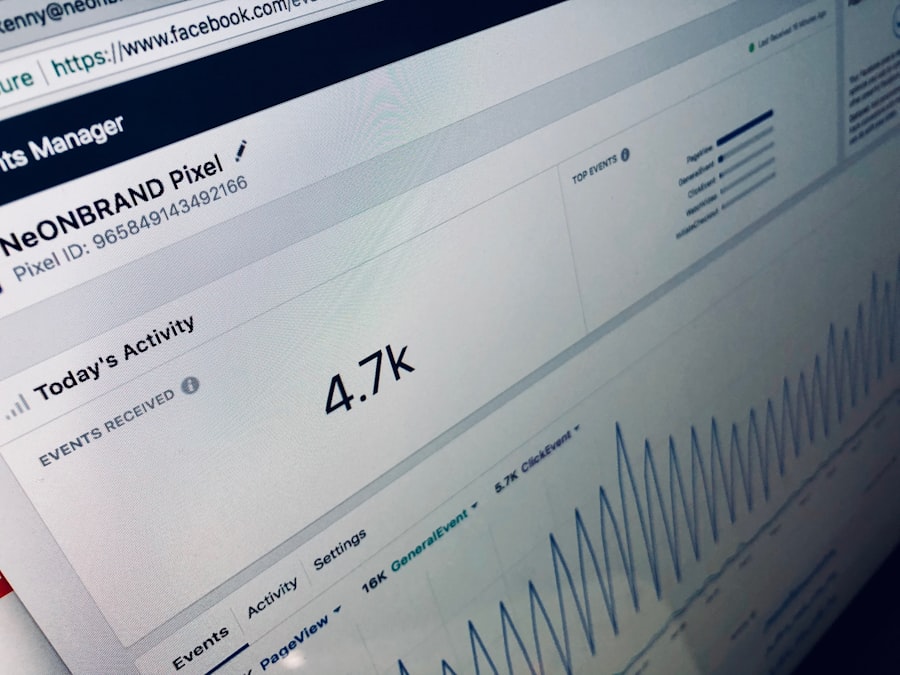To effectively engage with your audience, it is crucial to develop a deep understanding of who they are, what they value, and how they interact with your brand. This involves conducting thorough market research, which can include surveys, focus groups, and analyzing existing customer data. By segmenting your audience based on demographics, psychographics, and behavioral patterns, you can create more personalized marketing strategies that resonate with different groups.
For instance, a company selling outdoor gear might find that their audience includes both avid hikers and casual campers. Each segment will have distinct preferences and motivations, necessitating tailored messaging and product offerings. Moreover, understanding your audience goes beyond mere demographics; it also encompasses their needs, pain points, and aspirations.
Engaging with your audience through social media platforms or community forums can provide invaluable insights into their preferences and challenges. For example, if you discover that a significant portion of your audience is concerned about sustainability, you can highlight eco-friendly practices in your marketing campaigns. This not only fosters a connection with your audience but also positions your brand as one that genuinely cares about the issues that matter to them.
Key Takeaways
- Know your audience deeply to tailor your advertising effectively.
- Define specific goals to guide your campaign strategy and measure success.
- Craft engaging ad content that captures attention and drives action.
- Use targeting and custom audiences to reach the most relevant users.
- Continuously test, monitor, and optimize campaigns for better performance and ROI.
Setting Clear Goals and Objectives
Establishing clear goals and objectives is a foundational step in any marketing strategy. These goals should be specific, measurable, achievable, relevant, and time-bound (SMART). For instance, rather than simply stating a goal to “increase sales,” a more effective objective would be to “increase online sales by 20% over the next quarter.” This specificity allows for better tracking of progress and provides a clear target for the marketing team to aim for.
In addition to sales targets, goals can encompass various aspects of marketing performance, such as brand awareness, customer engagement, or lead generation. For example, a company might set an objective to grow its email subscriber list by 15% within six months. By defining these objectives upfront, businesses can align their marketing efforts and resources accordingly.
Furthermore, having clear goals enables teams to prioritize tasks and allocate budgets effectively, ensuring that every action taken is directed toward achieving the desired outcomes.
Creating Compelling Ad Content

The creation of compelling ad content is essential for capturing the attention of your target audience and driving engagement. This process begins with understanding the unique selling proposition (USP) of your product or service. What sets it apart from competitors?
Why should consumers choose your brand? Once you have identified these key differentiators, you can weave them into your ad content in a way that resonates with your audience’s values and needs. Visual elements play a significant role in ad content as well.
High-quality images or videos can evoke emotions and create a lasting impression. For instance, a travel agency might use stunning visuals of exotic destinations to inspire wanderlust among potential customers. Additionally, incorporating storytelling into your ads can enhance their effectiveness.
By sharing relatable narratives or customer testimonials, you can create an emotional connection that encourages consumers to take action. A compelling ad not only informs but also entertains or inspires, making it more likely to be shared and remembered.
Utilizing Targeting and Custom Audiences
| Metric | Description | Example Value | Importance |
|---|---|---|---|
| Audience Size | The total number of users in a custom or targeted audience. | 50,000 | High – Determines reach and scale of campaigns. |
| Click-Through Rate (CTR) | Percentage of users who clicked on the ad after seeing it. | 3.5% | High – Measures engagement effectiveness. |
| Conversion Rate | Percentage of users who completed a desired action after clicking. | 7.2% | High – Indicates campaign success in driving actions. |
| Cost Per Acquisition (CPA) | Average cost to acquire a customer through the targeted audience. | 12.40 | Medium – Helps evaluate cost efficiency. |
| Frequency | Average number of times an ad is shown to a user in the audience. | 4.2 | Medium – Important to avoid ad fatigue. |
| Return on Ad Spend (ROAS) | Revenue generated for every unit spent on ads targeting the audience. | 4.5 | High – Measures profitability of targeting strategy. |
| Engagement Rate | Percentage of audience interacting with the ad (likes, shares, comments). | 5.8% | Medium – Reflects audience interest and relevance. |
Effective targeting is a cornerstone of successful advertising campaigns. By utilizing data-driven insights, marketers can reach specific segments of their audience with tailored messages that resonate with their interests and behaviors. Platforms like Facebook and Google Ads offer advanced targeting options that allow advertisers to hone in on demographics such as age, location, interests, and online behavior.
For example, a fitness brand might target ads specifically to individuals who have shown interest in health and wellness topics or who frequently engage with fitness-related content. Custom audiences take targeting a step further by allowing businesses to reach individuals who have already interacted with their brand. This could include website visitors, past customers, or those who have engaged with social media posts.
By creating tailored ads for these audiences, brands can nurture existing relationships and encourage repeat purchases. For instance, an e-commerce store might run a campaign targeting customers who abandoned their shopping carts, offering them a discount to incentivize completion of the purchase. This strategic approach not only maximizes ad spend but also enhances the likelihood of conversion.
A/B Testing and Optimization
A/B testing is an invaluable tool for optimizing ad performance by comparing two variations of an ad to determine which one resonates more effectively with the target audience. This process involves changing one element at a time—such as the headline, image, or call-to-action—and measuring the impact on key performance indicators (KPIs) like click-through rates or conversion rates. For example, if an ad featuring a bold headline outperforms one with a more subdued approach, marketers can confidently adopt the more effective version for broader use.
Continuous optimization is essential in the fast-paced world of digital advertising. As consumer preferences evolve and market dynamics shift, regularly revisiting ad performance data allows marketers to make informed adjustments. This could involve refining targeting parameters based on engagement metrics or experimenting with different ad formats to see what resonates best with the audience.
By fostering a culture of experimentation and data-driven decision-making, businesses can enhance their advertising effectiveness over time.
Monitoring and Analyzing Performance Metrics

Monitoring performance metrics is critical for understanding the effectiveness of advertising campaigns and making informed decisions moving forward. Key performance indicators (KPIs) such as impressions, clicks, conversions, and return on ad spend (ROAS) provide valuable insights into how well ads are performing against established goals. For instance, if an ad campaign generates high impressions but low click-through rates, it may indicate that the ad content is not compelling enough or that the targeting is off.
In addition to quantitative metrics, qualitative data can also provide context for performance analysis. Customer feedback through comments or reviews can shed light on how audiences perceive your ads and whether they align with their expectations. Tools like Google Analytics or social media insights can help track user behavior on landing pages after clicking through from ads.
By combining both quantitative and qualitative data, marketers can gain a comprehensive understanding of campaign performance and identify areas for improvement.
Retargeting and Remarketing Strategies
Retargeting and remarketing are powerful strategies designed to re-engage users who have previously interacted with your brand but did not convert. These tactics leverage cookies or tracking pixels to display targeted ads to users as they browse other websites or social media platforms. For example, if someone visits an online store but leaves without making a purchase, retargeting ads can remind them of the products they viewed or offer incentives to encourage them to return.
Remarketing campaigns can be particularly effective in nurturing leads through the sales funnel. By segmenting audiences based on their previous interactions—such as those who viewed specific products or added items to their cart—marketers can create tailored messages that address potential objections or highlight benefits relevant to those users. A travel company might send personalized emails featuring vacation packages based on destinations users previously explored on their website.
This level of personalization not only increases the likelihood of conversion but also reinforces brand recall.
Budgeting and Scaling for Success
Effective budgeting is essential for maximizing the impact of advertising efforts while ensuring sustainable growth. Businesses must allocate resources strategically across various channels based on performance data and anticipated returns. This involves setting aside budgets for testing new campaigns while maintaining funding for proven strategies that deliver results.
For instance, if a particular social media platform consistently generates high engagement rates for your brand, it may warrant an increased budget allocation compared to less effective channels. As campaigns prove successful, scaling becomes a natural next step. This involves increasing ad spend on high-performing campaigns while exploring new audience segments or geographic markets.
However, scaling should be approached cautiously; simply increasing budgets without proper analysis can lead to diminishing returns if not managed effectively. Continuous monitoring of performance metrics during scaling efforts is crucial to ensure that increased investment translates into proportional growth in conversions or sales. By maintaining a disciplined approach to budgeting and scaling, businesses can achieve sustained success in their advertising endeavors while adapting to changing market conditions.




